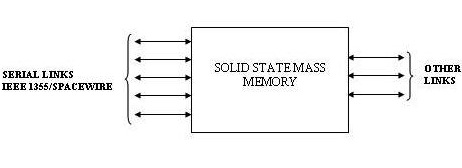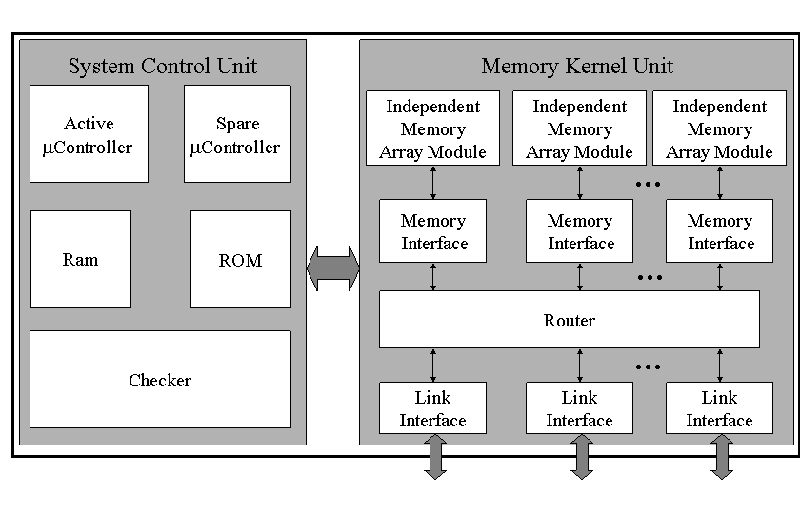The Solid State Mass Memory
The design of electronic systems for space applications must consider several problems related to the harsh environment in which the system is employed. In fact, in the space environment the electronic components are stressed by a large number of physical phenomena, like mechanical stresses, ionizing radiations and critical thermal conditions. To face these specific application constraints, the typical approach has been the development of space qualified electronic devices based on special and expensive technology processes. The use of such components implies some important drawbacks such as the cost of each piece and the low performances available compared to the Commercial Off The Shelf (COTS) components. Therefore, the design of an electronic system for space applications using commercial components must fulfill the reliability requirements developing suitable system level methodologies.
A typical application, where this approach can be exploited, is the design of space-borne mass memories. In fact, the rapid growth in capacity of semiconductor memory devices permits today the development of solid-state mass memories, which are competitive with tape recorders due to higher reliability, comparable density and better performances. Solid-state mass memories have no moving parts and their operational flexibility has made them suitable for many applications. To obtain memories with low latency time high throughput and storage capabilities, space qualified components are not a valid option, therefore the choice of COTS is mandatory.
The SSMM we developed implemented connects the memory modules to the instruments using a crossbar matrix that connects the elements of the network. This solution is convenient with respect to a common bus in terms of bandwidth, latency and reconfiguration capability. In fact, the failure of a connection does not compromise the entire connection of the network but only the access to a specific node. Moreover, in order to improve both the fault tolerance and the memory usage, we implemented a distributed file system on the SSMM. Most of the functions performed by the file system are hardware based and handled locally on each memory module.

The top level of the SSMM can be considered as a black box connected by some links, used for carrying command signals and data. Although various kinds of links can be used to communicate with the SSMM, the Spacewire (IEEE 1355 DS-DE) protocol is widely used in this application. Spacewire is planned to become a European Space Agency (ESA) standard for on-board data-handling in the near future and is expected to be widely used in future European missions. Each Spacewire link can carry data at around 100 Mbit/sec, over distances of up to 10m. Spacewire is intended to support the ready reuse of equipment developed for space applications.Moreover, the SSMM can be connected with a MIL 1553 bus, normally used in satellite platforms.

The SSMM architecture can be split in two fundamental units:
- The System Control Unit (SCU) manages the memory resources and provides system level reconfiguration
- The Memory Kernel Unit (MKU) manages the bi-directional data flow between users and memory chips
The desired reliability of the SSMM system is achieved both by means of architectural redundancies, and by introducing Error-Correcting Codes (ECC), granting data integrity
A Prototype of the Solid State Mass Memory has been developed.
The development of the prototype of the SSMM is intended to obtain a simple but still representative version of the proposed design. The choice was made on the implementation of a version of the memory composed of two memory modules and two link interfaces. In this manner the basic characteristics of the routing and dynamic file system allocation have been preserved while reducing the complexity of the implementation with respect to a nxn version. Moreover, the objective of the implementation phase is to exploit a fast prototyping methodology in order to have high flexibility in the debugging and testing of the prototype.